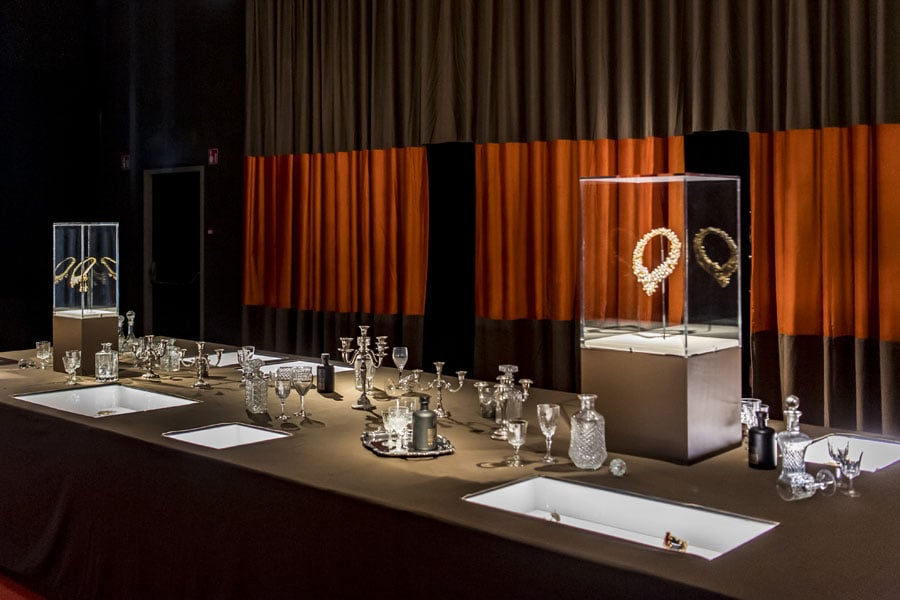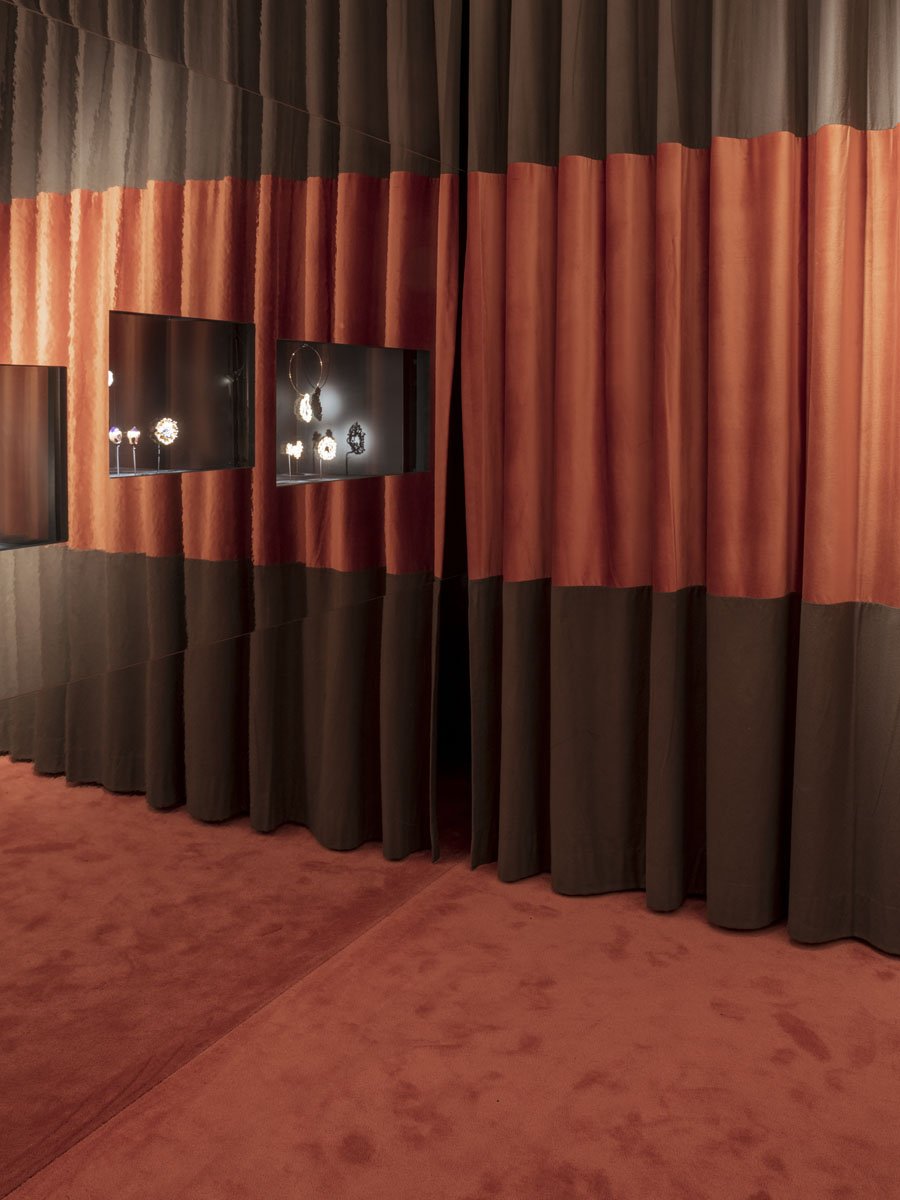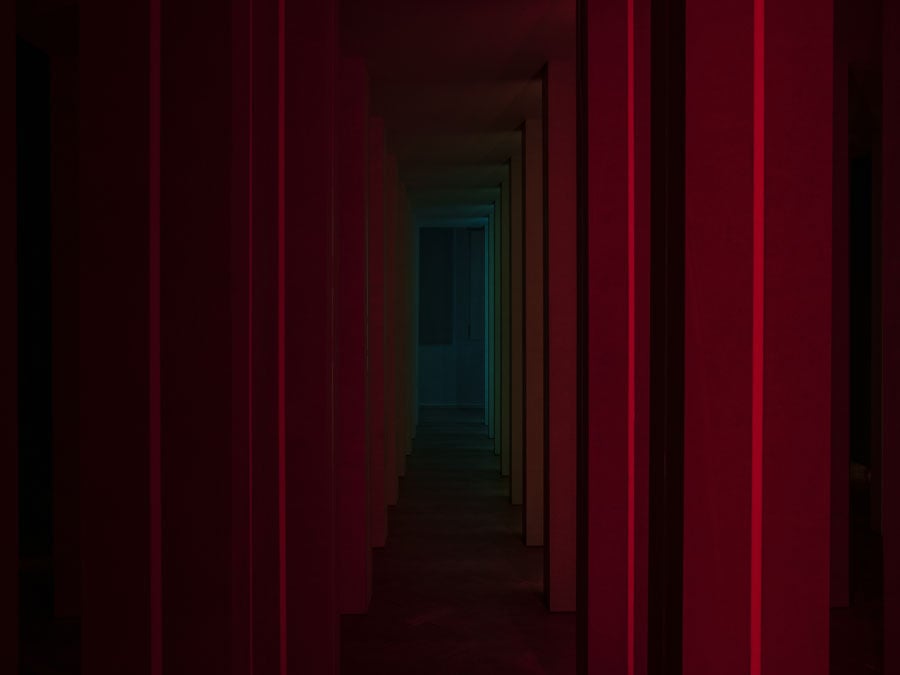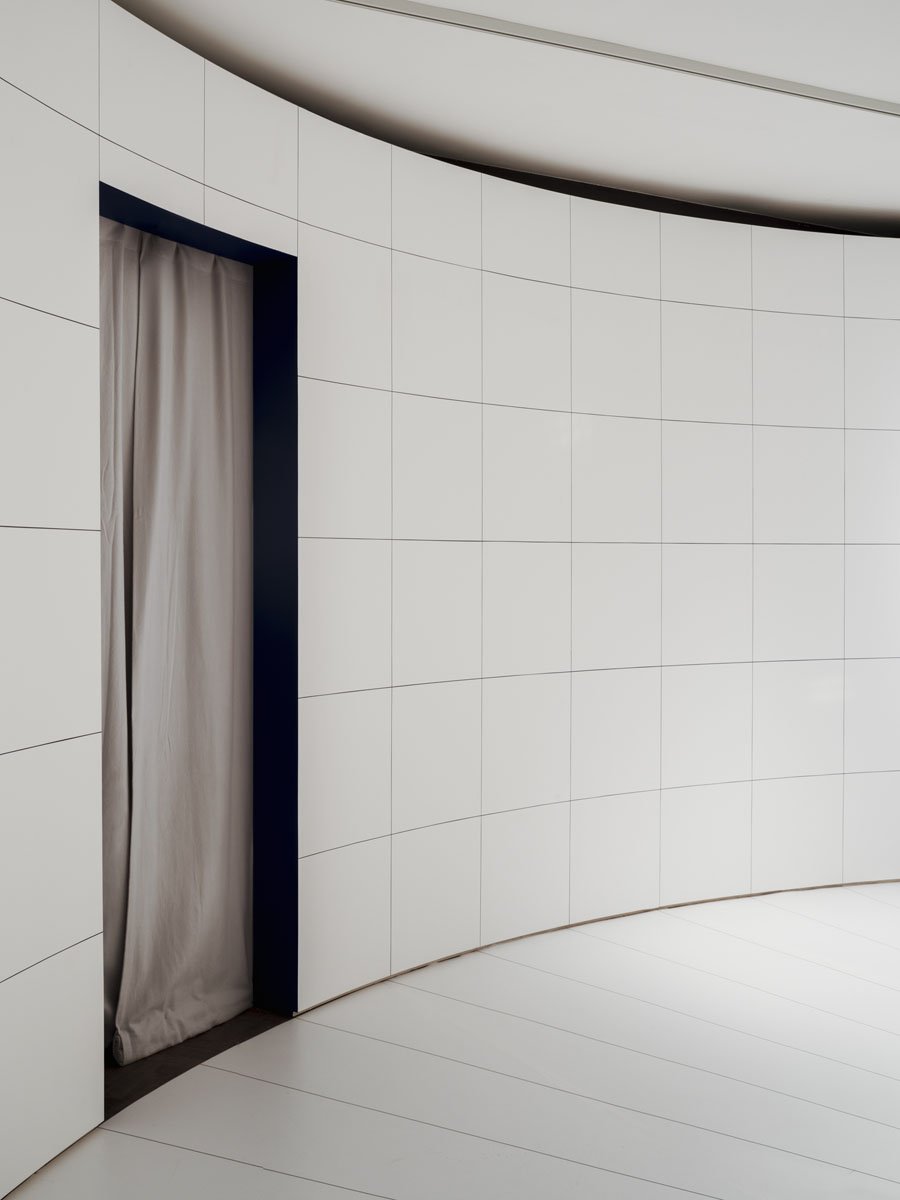
March 2, 2021
A Jewelry Exhibition in Antwerp Channels Space Age Aesthetics
Designed by Amsterdam-based architecture firm Beyond Space, the scenography for The Jeweler’s Art: Revolutionary Jewelry from the 1960s & 1970s captures the aesthetic and cultural zeitgeist of the era.

Burnt orange shag carpet, liberal use of brown upholstery, and mirrors on any surface—these are just a few of the 1960s interior design trends that inspired Amsterdam-based architecture firm Beyond Space’s (founded by Remi Versteeg and Stijn De Weerd, former partners at Space Encounters) design for the exhibition The Jeweler’s Art: Revolutionary Jewelry from the 1960s & 1970s. On view at Antwerp’s DIVA Museum for Diamonds, Jewelry, and Silver, the exhibition charts the innovative developments in jewelry design in the U.K.’s “Swinging Sixties.”
Curated in collaboration with the Cincinnati Art Museum, the objects on view were selected from the private collection of Cincinnati-based jewelry collector Kimberly Klosterman. The more than 100 items represent international and independent jewelry designers including Bulgari, Cartier, and Van Cleef & Arpels. Selected to display the “uncompromising vision” of designers of the era, the objects on view illustrate an artistic approach and non-conformist attitude toward materials, scale, and texture that is similarly reflected in Beyond Space’s exhibition design. In addition to starburst brooches, amoeba-shaped lockets, and rings that appear to be from outer space, visitors will also find fashion, music, and product design from the era characterized by hedonistic rebellion and a youth-driven cultural revolution.

“Each room has its own character and reflects the revolutionary developments of the time,” cofounders Remi Versteeg and Stijn de Weerd say of their scenography. Entering the exhibition, physically or virtually, visitors step into an organically-shaped womblike room decorated in orange and brown color block curtains and orange carpet. Even a column is draped in the floor-to-ceiling fabric. Mirrored walls make it hard to tell where the exhibition begins and the room ends. The designers liken the atmosphere to “a party that has just taken place,” with a large, central table covered in silver tableware and gold and pearl necklaces.
Contemporaneous furniture is placed throughout the galleries. Pierre Paulin’s F577 Tongue Chair in an optical print offers a place to sit amongst the shimmering objects. Passing through slits in the curtains, visitors are transported to a black-box space with two paisley-clad mannequins lounging in Eero Aarnio Ball chairs inside glass vitrines, gazing up at slide projections of iconic cultural moments from The British Invasion and the rise of popular astrology to London’s youth movements.

Not only influenced by those cultural shifts, Beyond Space also delved into the jewelry to draw inspiration for the exhibition’s layout and materiality. “A trend towards using ‘extraterrestrial’ materials emerged at the time. There is a Gilbert Albert ring and necklace that contain pieces of moldavite, a green, glassy material formed by a meteorite impact 15 million years ago, which we translated spatially,” they explain. The architects tie the object to the Space Age aesthetic that characterizes their site-specific installation Transito, a labyrinth of symmetrical pillars that create psychedelic, pulsating light waves that form an otherworldly passage to the final gallery.
For Transito, the designers treated light as a sculptural element allowing the resulting shadows to orient the viewer in the space as much as the physical pillars. They note, “One moment the installation feels like a black hole, the next the visitor is absorbed by the light.” Created in collaboration with Amsterdam artists Children of the Light, Transito, according to the designers, “can be interpreted as a transition from the wild 1960s—full of color and asymmetrical baroque shapes—to a minimalist and futuristic 1970s.”

As visitors emerge from the light installation and pass through another vibrant orange curtain, they are ushered into the final gallery: a sundial-shaped room symbolizing the futuristic thinking and polished geometric abstraction of the 1970s. Mannequins stand on rock formations reminiscent of the Gilbert Albert ring, while mirrors make the white, Superstudio-esque grid appear infinite. Versteeg and de Weerd cite Stanley Kubrick’s 2001: A Space Odyssey as an obvious reference.
In designing the exhibition, the architects note that “It’s about creating the identity of a space and forming a spatial experience that goes beyond the physical world of the objects.” In addition to seeking to educate the public on this revolutionary period in design, they hope that as exhibition designers, their scenography alters “the way time and space are perceived.”
Available for in-person viewing at DIVA Museum Antwerp or accessed via a Matterport gallery and an in-depth visitor’s guide, the exhibition is open now through March 14th.
You may also enjoy “Has the Pandemic Changed the Experience of Encountering Art in Public?”
Would you like to comment on this article? Send your thoughts to: [email protected]
Register here for Metropolis Webinars
Connect with experts and design leaders on the most important conversations of the day.

















